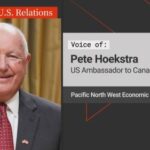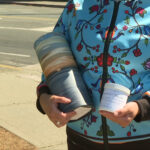The quiet hum of Edmonton’s public spaces has been disrupted by an invisible threat as Alberta grapples with its worst measles outbreak in decades. Provincial health officials confirmed today that the number of confirmed cases has now exceeded 700, with Edmonton emerging as the epicenter of this rapidly evolving public health crisis.
“We’re seeing transmission rates we haven’t encountered since before widespread vaccination became the norm,” said Dr. Melissa Hawkins, Alberta’s Chief Medical Officer of Health. “This isn’t just a handful of isolated cases anymore—we’re facing a genuine outbreak that threatens our most vulnerable populations.”
The outbreak has prompted Alberta Health Services to issue exposure notifications for several high-traffic locations including West Edmonton Mall, the Edmonton International Airport, and multiple schools throughout the capital region. Health authorities have confirmed that an infected individual visited these locations while contagious during the past week, potentially exposing hundreds of others.
What makes this outbreak particularly concerning is the concentration of cases among unvaccinated or partially vaccinated individuals. According to CO24 News, approximately 83% of confirmed cases involve people who did not receive the recommended two doses of the MMR (measles, mumps, rubella) vaccine.
The rapid spread has overwhelmed testing facilities across the province. At the Royal Alexandra Hospital’s dedicated measles assessment center, wait times have stretched to over three hours as concerned parents bring children with fever, rash, and respiratory symptoms for evaluation.
“We’ve had to reallocate staff from other departments to manage the influx,” explained Sarah Montgomery, senior nursing coordinator at the Royal Alexandra. “Many of our nurses haven’t seen measles cases in their entire careers until now, so we’re simultaneously treating patients and conducting additional training.”
The economic impact is already being felt across Canada, with workplace absenteeism rising and some parents forced to take unpaid leave to care for ill children or those kept home from affected schools. The Alberta Chamber of Commerce estimates local businesses could face losses exceeding $12 million if the outbreak continues through summer.
Provincial officials have implemented emergency vaccination clinics in response, with extended hours at community health centers and mobile vaccination units deployed to underserved areas. However, vaccine hesitancy remains a significant hurdle.
“The irony is that measles was declared eliminated in Canada in 1998,” noted Dr. Gabriel Chen, infectious disease specialist at the University of Alberta. “What we’re seeing now is a preventable consequence of declining vaccination rates. The science is abundantly clear—vaccines prevent these outbreaks.”
The outbreak’s timing couldn’t be worse as summer tourist season approaches. Travel advisories from the United States and several European countries now mention Alberta specifically, potentially affecting the province’s $8.2 billion tourism industry.
Premier Danielle Smith addressed the situation yesterday, announcing additional funding for emergency response while emphasizing personal choice in vaccination decisions. The measured response has drawn criticism from medical experts who argue stronger public health measures are needed.
As schools prepare for summer break, health officials worry about the potential for wider geographic spread. The highly contagious nature of measles—which can remain airborne for up to two hours after an infected person leaves a space—makes containment particularly challenging.
“This isn’t just about the 700 cases we’ve confirmed,” Dr. Hawkins cautioned. “Each case potentially exposes dozens more, especially before symptoms become apparent. We need to act decisively to prevent this from becoming a national concern.”
As Alberta navigates this public health challenge, the question remains: can we reclaim our hard-won victory over diseases we once thought relegated to history books, or is this outbreak a harbinger of a troubling new normal in public health?

























